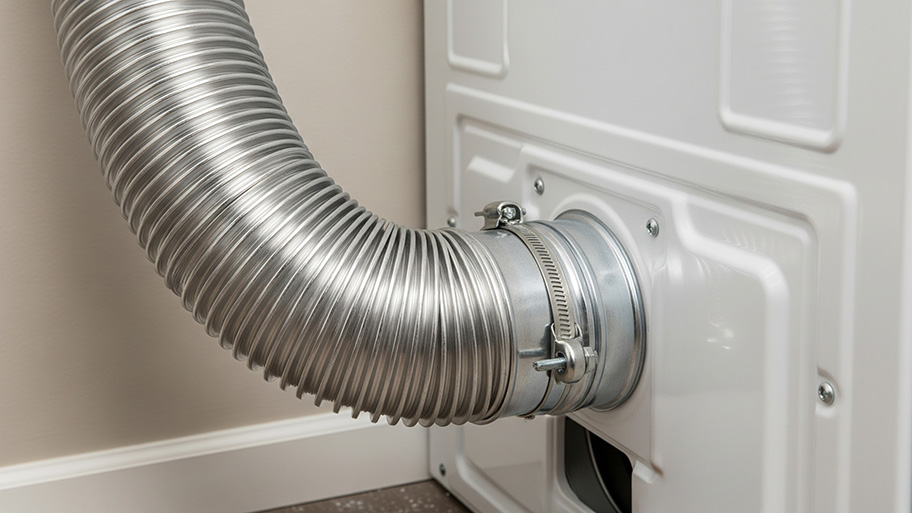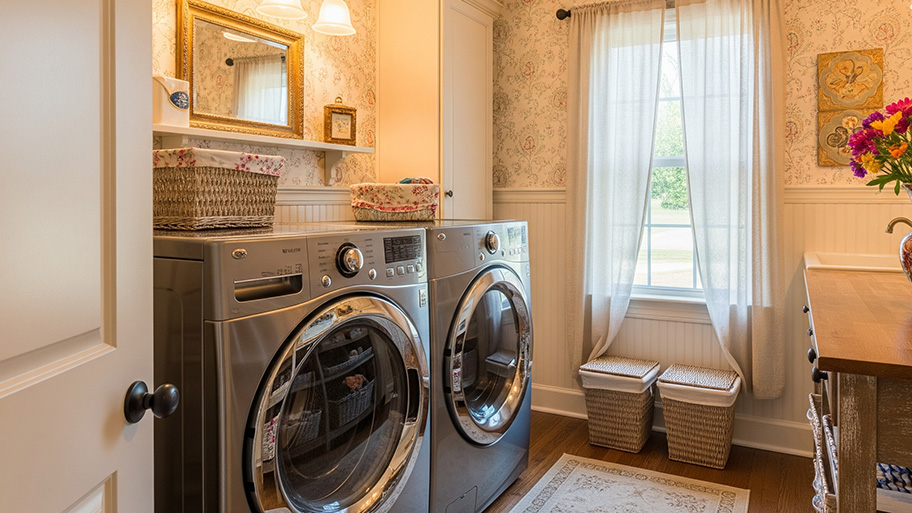
A dryer vent cleaning cost averages about $140 when done by a professional. Read our tips to understand the key cost factors involved in dryer vent cleaning.
Deep clean your dryer in no time


Taking care of your dryer requires more than just removing the lint after every load. To extend the life of this important appliance and ensure your bedding, towels, and clothing stay clean, you’ll need to disinfect it properly with the right supplies and technique.
By following the steps provided, you’ll end up with a dryer that not only looks brand new, but also prevents the possibility of cross-contamination if dirty items have been put on low heat or air-only cycles.
Before you start scrubbing, it helps to take a close look at the inside of your dryer to get an idea of how thoroughly you need to clean it.
Inspect it from top to bottom, looking for major scuffs or stains from dried gum, ink, or fabric bleeding. These spots may require more heavy-duty scrubbing to remove completely. Also keep an eye out for any cracks or loose pieces in your dryer. If you spot anything, call a dryer repair technician first before you start cleaning.
For the sake of safety, unplug your dryer before you begin cleaning it. This way, you won’t be caught off guard if it starts midway through sanitizing. You also don’t want to risk getting any wires or cords wet while they’re plugged in.
Using a machine with a brush attachment, vacuum the inside of the dryer to remove any dirt, debris, or lint. This is also a good time to vacuum the lint from the dryer screen. Make sure the dryer is completely free of dirt and debris since it’s harder to remove once you add the cleaning solution.
Pour about a 1/2 cup chlorine bleach and a gallon of cool water into a clean, empty bucket. In a separate bucket, mix a few squirts of liquid dish soap and a gallon of cool water together. You’ll use the bleach solution first to sanitize and follow it with the dish soap solution.

Once you’ve mixed the solutions, it’s time to disinfect the dryer. If you’re sensitive to the smell of strong chemicals, it may help to put on a mask to prevent inhalation of the bleach and dish soap.
After you put on your rubber gloves, take a clean rag and soak it in the bleach solution.
Wring the rag out, then wipe down the inside of the dryer, paying special attention to any stains or scuff marks.
Next, take another clean rag and soak it in the liquid dish soap solution.
Wring it out, then wipe down the inside of the dryer to remove the bleach.
Soak a clean rag in a bucket of water and wipe down the inside of the dryer to remove the soap solution. When you’re satisfied with the end result, leave the dryer door open and let it air out. Plug the dryer back in so it’s ready for the next load of laundry.
Even though this is a quick DIY, it may be worth hiring a professional house cleaner near you to sanitize and disinfect your dryer. Calling in an expert can be especially helpful if you’ve just purchased or inherited a used dryer and want to make sure it’s properly cleaned before you use it for the first time.
Professional cleaners may also be able to tell you if you need your vents cleaned. Dryer vent cleaning costs between $100 to $170, depending on where you live. You can also clean a dryer vent yourself, but if your vent is longer than six feet long, a pro will have the necessary tools to clean it thoroughly.
From average costs to expert advice, get all the answers you need to get your job done.

A dryer vent cleaning cost averages about $140 when done by a professional. Read our tips to understand the key cost factors involved in dryer vent cleaning.

Don’t let a dirty dryer vent cause problems in your home. Not sure how often to clean a dryer vent? Keep reading to learn best practices.

You might not think much of lint, but it’s actually a major fire hazard. Running your own dryer and dryer vent inspection can help you spot dangerous buildup.

Are you concerned that your dryer vent has accumulated too much lint and debris? Learn who cleans dryer vents so you can hire the best professional for the job.

Shortening your dryer vent saves energy costs, could extend the life of your clothes dryer, and is an excellent project for beginning DIYers.

To make sure your dryer is doing its job as efficiently as possible, it may be time for a new dryer vent. Keep reading to learn about dryer venting options.